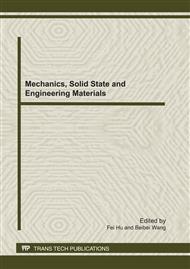p.120
p.126
p.132
p.136
p.142
p.147
p.151
p.157
p.161
New Technology Research of Nondestructive Testing for Aero Aircraft Composite Materials
Abstract:
Composite materials have many advantages such as big specific strength, high specific stiffness, good disrepair safety characteristic, large area molding conveniently and easy to forming complex shape. It becomes important structural materials of aero aircraft equipment necessarily and is used widely in aviation industry. Composite materials components of aero aircraft with complex and delicate structure chronically work in harsh environment. Early testing of its key component’s minute defects has been an urgent and necessary task. In this paper, its damage model and characteristic are analyzed and studied. Considering the limitation of composite materials structure’s detection methods at present, a number of existing problems are presented and development directions are pointed out. Laser ultrasound detection technique, continuous distribution sensing technique and optical fiber sensing technique are studied. The method of damage detection of aero aircraft’s composite materials components is put forward based on the organic combination of the three techniques. The results show that the system can be used to detect multi-ultrasound signals of large composite materials structure. Its structure is simple. It has small bulk and low cost. It is characterized by easy realization.
Info:
Periodical:
Pages:
142-146
Citation:
Online since:
July 2011
Price:
Сopyright:
© 2011 Trans Tech Publications Ltd. All Rights Reserved
Share:
Citation:


